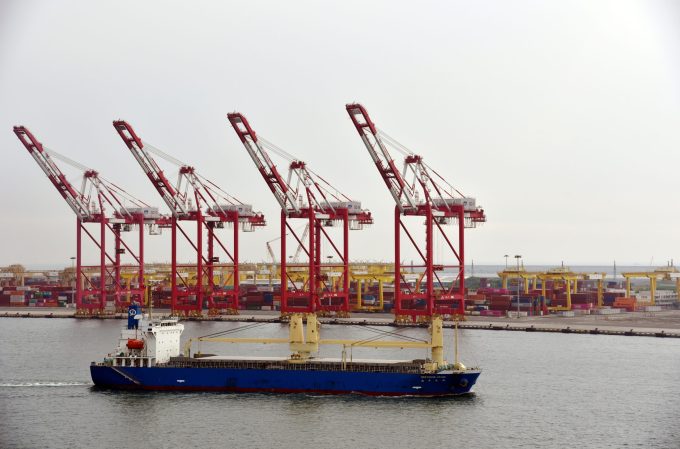India 'a critical growth market' for FedEx as it expands air express network
FedEx Express is putting itself on a stronger footing to tap into India’s booming trade ...
BA: WIND OF CHANGEMAERSK: BULLISH CALLXPO: HEDGE FUNDS ENGINEF: CHOPPING BOARDWTC: NEW RECORDZIM: BALANCE SHEET IN CHECKZIM: SURGING TGT: INVENTORY WATCHTGT: BIG EARNINGS MISSWMT: GENERAL MERCHANDISEWMT: AUTOMATIONWMT: MARGINS AND INVENTORYWMT: ECOMM LOSSESWMT: ECOMM BOOMWMT: RESILIENCEWMT: INVENTORY WATCH
BA: WIND OF CHANGEMAERSK: BULLISH CALLXPO: HEDGE FUNDS ENGINEF: CHOPPING BOARDWTC: NEW RECORDZIM: BALANCE SHEET IN CHECKZIM: SURGING TGT: INVENTORY WATCHTGT: BIG EARNINGS MISSWMT: GENERAL MERCHANDISEWMT: AUTOMATIONWMT: MARGINS AND INVENTORYWMT: ECOMM LOSSESWMT: ECOMM BOOMWMT: RESILIENCEWMT: INVENTORY WATCH

Indian importers, struggling to find space on containerships out of China amid deteriorating supply-demand mismatch – are increasingly turning to breakbulk services to keep their supply chains as stable as possible.
This conversion of some traditionally containerised cargo into breakbulk or multipurpose tonnage is a replay of pandemic-era shipping.
According to industry sources, there are breakbulk opportunities for Indian shippers and freight forwarders unable to secure space on containershipsas well as facing rocketing spot rates.
And Cosco seems to be the frontrunner among the top carriers tapping into this spillover demand.
“Cosco is offering a semi-liner schedule for breakbulk capacity from China to India,” one ship agent in Mundra Port told The Loadstar.
According to the source, multipurpose vessels (MPVs) are being used for two or three sailings a month, generally calling at Mumbai (old port), Mundra or Kandla on India’s west coast and Visakhapatnam, Kolkata, Paradip or Chennai in the east.
“The shift is more visible for cargo generally shipped in flat rack or open-top containers,” the agent added.
The source also said recent Cosco MPV calls had full cargo loads and were also able to pick up sufficient traditional dry bulk cargo, mostly granites and iron ore, on the backhaul.
Listen to this clip from The Loadstar Podcast to hear Peter Sundara Swamickannu, Head of Global Ocean Freight Product, Visy Global Logistics, discussing whether excess demand is due to an early peak season or the indicator of a huge Q3:
Maersk is the other frontline container carrier searching for alternative capacity for customers and has used breakbulk space on the Cosco MPV sailings for loading from China to India, reported another industry source.
A terminal official in Pipavav Port, an APM Terminals multipurpose facility near Mundra, also confirmed an increase in berthing window requests from MPV and ro-ro operators, because of the de-containerisation trend as demand far outstrips conventional container capacity.
“We are exploring breakbulk vessel options to avoid containership space and equipment availability issues,” one executive at a major Indian industrial group told The Loadstar.
Simultaneously, for the export movement of usually boxed agricultural commodities, some Indian traders have also begun using breakbulk or other general cargo vessels. Containerised agri products generally shipped out of India are grains, oil seeds, pulses, rice, sugar and vegetable oil, with Africa the top consuming market.
The latest conversion case for agri cargo was a sailing from Kandla Port to Tanzania, sources said.
“Even after getting confirmed bookings, containers are often not available to stuff cargo, putting shipment schedules/commitments at great risk,” a Mumbai-based agri trader complained. “So we have had to ship some cargo on breakbulk.
“And we are getting calls for references regarding breakbulk vessel operators from forwarders, as their customers want to shift as well,” the trader added.
You can contact the writer at [email protected].
Comment on this article